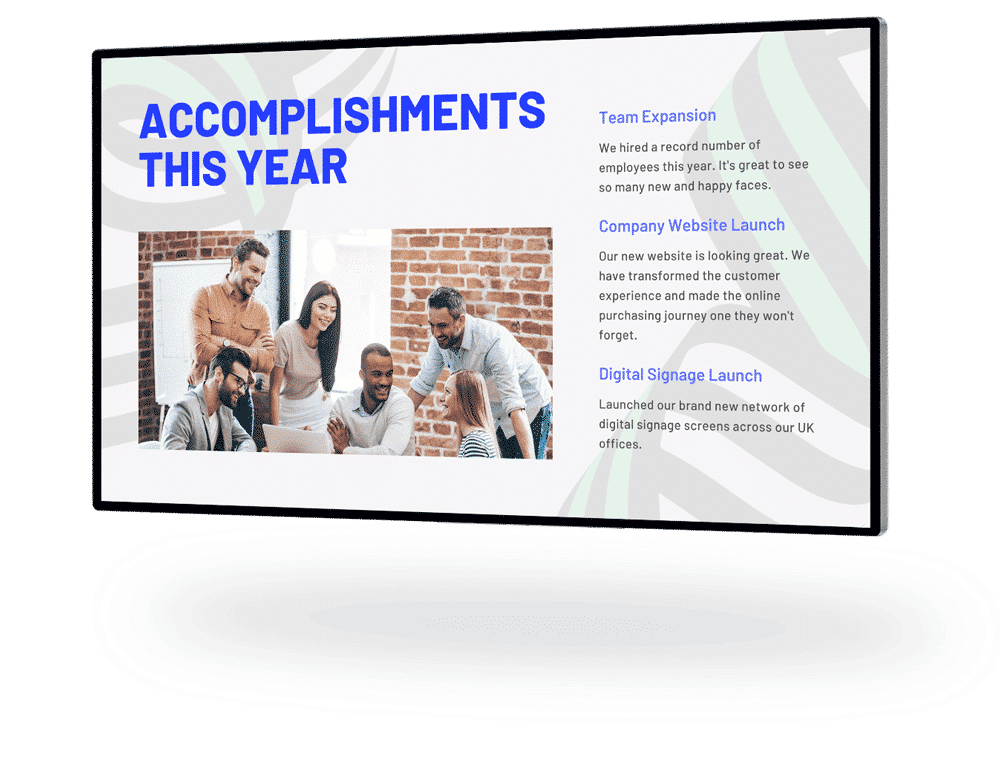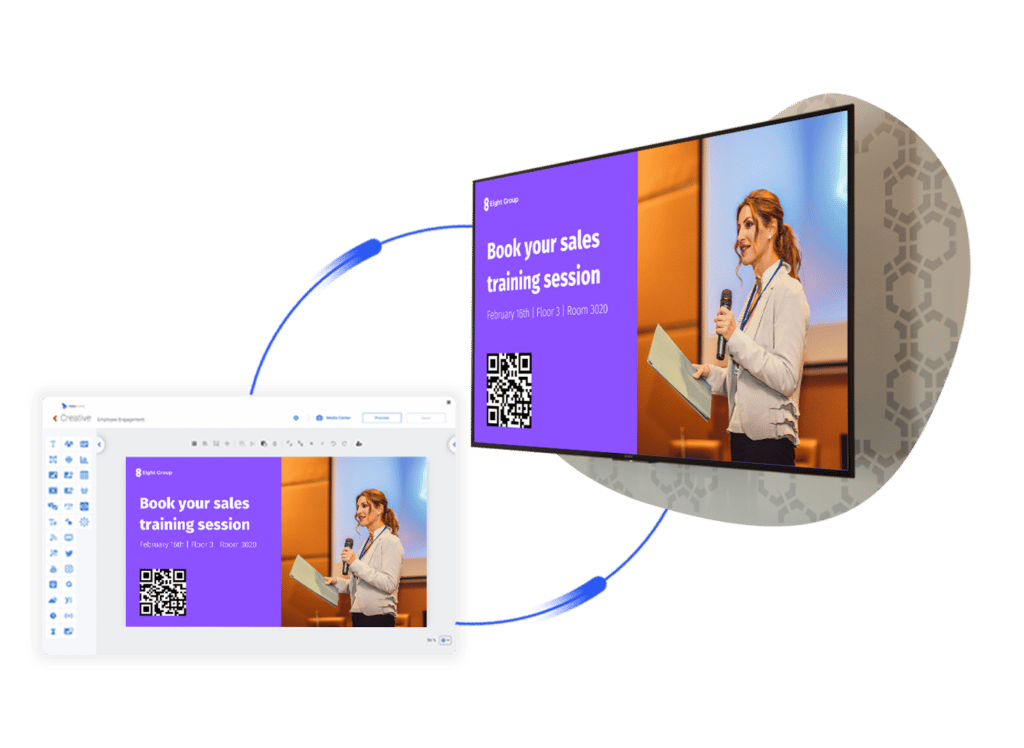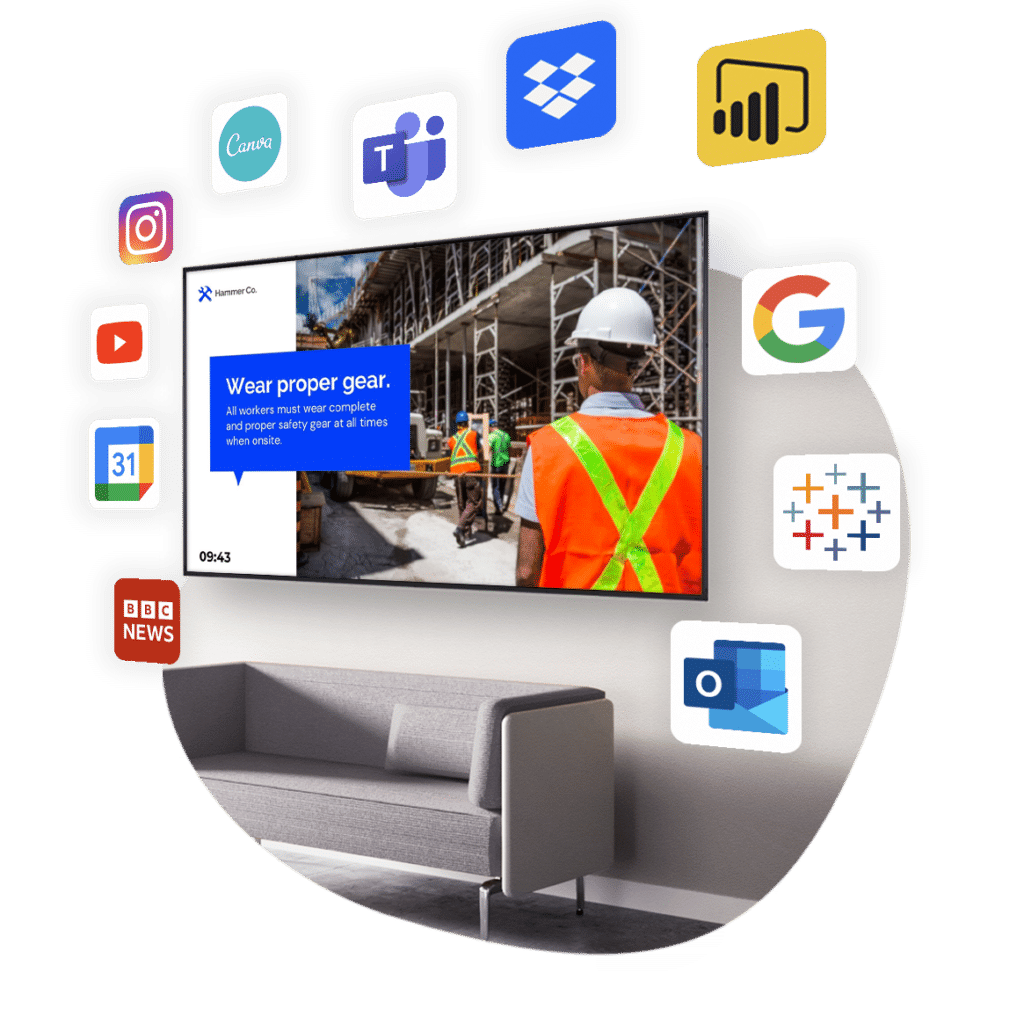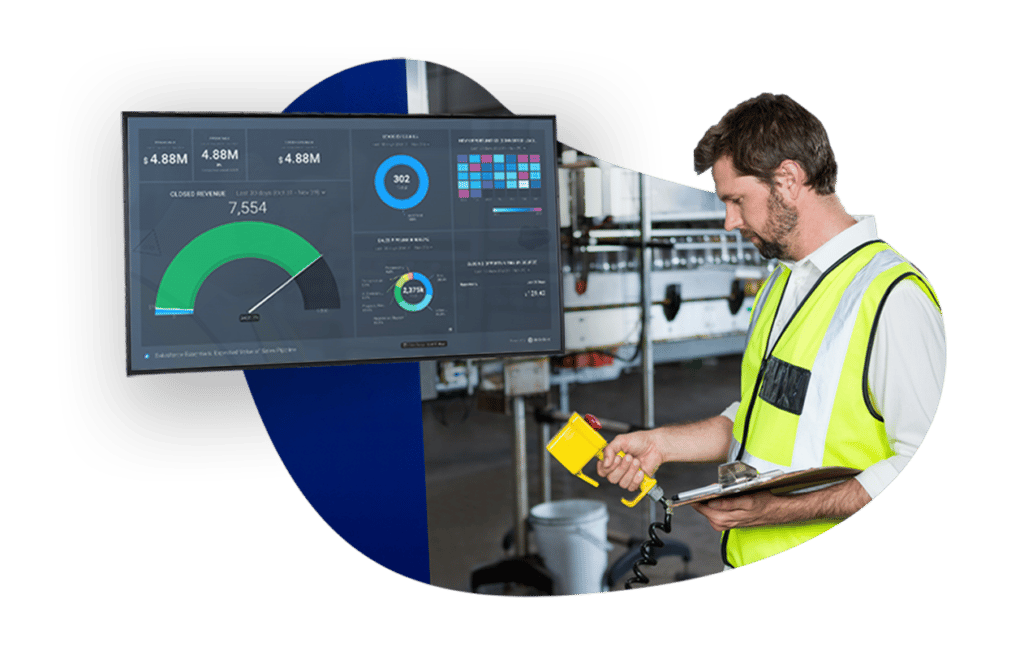Effective employee communication serves as the foundation for building a robust and thriving workforce. A clear, consistent, and open exchange of information, whether face-to-face or via various digital platforms, fosters a harmonious work environment, boosts employee engagement, and enhances overall productivity.
By aligning individual and organisational goals, effective communication empowers employees and increases job satisfaction. Furthermore, it enables employers to understand their team’s needs and challenges better, thus fostering a supportive and inclusive work environment. These are just some of the multiple benefits of excellent employee communication.
In this article, we’ll discuss the significance of effective employee communication and its benefits in more detail. You’ll also learn practical strategies to improve communications and common mistakes to avoid in order to run a successful organisation.
Table of Contents
What is employee communication?
Employee communication is the continuous exchange of information, concepts, and emotions between the members of an organisation and their leaders. This interaction can be face-to-face or electronic, spanning numerous platforms such as emails, mobile apps, intranets, digital signage software, and other team collaboration tools such as Slack, Teams and Asana.
Successful communication with employees lies in its relevance and compliance with its specific organisation’s context. There is no “one size fits all” formula, and communication strategies should be tailored to each company’s needs.
Employee communication benefits
Employee engagement
Engagement is arguably the most important metric (and benefit) of a communication strategy. Without it, a company may as well be shouting into an empty room.
Employee disengagement costs the global economy $8.8 trillion in lost productivity. On the other hand, the benefits of higher employee engagement are long-established. Engaged teams have a lower employee turnover rate, ranging from 24% to 59% less than disengaged ones.
Engagement also translates into a 21% increase in profitability, a 17% increase in productivity, and a decrease in safety incidents and absenteeism of 70% and 41%, respectively. In other words, ensuring workers are engaged and invested in your business’s success is becoming increasingly important.
Communication, engagement and productivity feed into each other. For an employee to perform their job well, they need to have the correct information. It’s also crucial that they have a way to give feedback. This openness boosts a sense of inclusion which, in turn, heightens productivity and leads to greater investment in their daily roles and overall organisational successes. In a modern workforce, engagement is particularly important among younger, hybrid and remote workers, where daily face-to-face contact isn’t as common.
For managers, regular, meaningful conversations about employees’ goals and well-being allow them to stay attuned to their team’s challenges and needs. This information is indispensable when it comes to creating the
Employee satisfaction
Effective internal communication is one of the most powerful strategies for improving employee satisfaction. Through transparent and regular interaction, employees gain a sense of empowerment and connection to the organisation, promoting a positive workplace attitude. Moreover, it creates better alignment between individual and organisational goals.
Effective and open communication is instrumental in building a work environment that recognises achievements and rewards employees. This contributes to overall job satisfaction, an indispensable aspect of a thriving organisation.
Workplace harmony
Ineffective communication between staff and management can lead to misunderstandings and bottlenecks that disrupt workplace harmony, induce stress, and cause a disconnect. However, with transparent and clear communication, these issues can be nipped in the bud, preserving a peaceful and productive work atmosphere.
The Achievers Workforce Institute 2023 Employee Engagement and Retention report found that 79% of surveyed employees would prefer to stay in a friendly and supportive environment where they feel valued rather than a higher-paying job lacking appreciation. This clearly demonstrates the role of effective communication in nurturing a harmonious, engaging, and retaining workforce.
Health and safety
Great communication is vital for a safe and healthy work environment. Explicit communication helps employees understand their roles, identify hazards, embrace safe practices, and promptly react to emergencies. Implementing robust internal communication systems helps surmount language barriers and literacy challenges by providing multilingual instructions and using clear images or symbols.
Comprehensive communication should encourage feedback, provide workplace training, and keep all team members informed on best health and safety practices. Effective emergency planning, including mock drills and clearly identified emergency contact information, is also vital. Through proper workplace communication, workers can be well-versed in their occupational health and safety rights, company safety roles, emergency procedures, and the importance of reporting injuries and illnesses.
Improved management
Effective internal communication strengthens trust and leads to better management. When diverse perspectives are valued, teams become more united and committed to their shared mission.
According to recent research, 74% of workers prefer to work with a trustworthy employer. A lack of clear, honest communication impacts trust, employee morale, and productivity. Thus, building trust through proactive and transparent communication is a critical task for management, influencing company harmony and overall performance.
Innovation and collaboration
Open communication fosters innovation, collaboration, and inter-departmental cooperation. It ensures success and a cohesive working environment. Departments must maintain ongoing contact for collaborative support, propelling the organisation to flourish.
How to measure effective employee communication
Measuring the effectiveness of employee communication is vital to improving and maintaining it. Here are some strategies and key performance indicators (KPIs) to gauge your success:
Engagement tracking
Determining the effectiveness of your communication strategy involves assessing whether employees genuinely engage with the information provided. Communication platforms can track engagement and help identify any weaknesses in your interactions. One practical way to measure engagement is by monitoring employee interaction with emails, such as clicks on embedded links. This data can provide insight into whether employees fully digest the distributed information.
Turnover rates
The employee turnover rate is another valuable metric in assessing your communication strategy. Employees who feel comfortable, heard, and valued will likely remain with the company long-term. Monitoring turnover rates provides insight into how well your communication strategies are faring in creating a positive work environment.
Employee advocacy
Finally, consider tracking employee advocacy as a measure of communication effectiveness. Contented employees often become advocates for your brand. High morale strongly indicates seamless communication and a comfortable working environment.
What cannot be measured cannot be improved either. Using these KPIs, you can effectively measure your employee communication, identify areas for improvement, and create an inclusive, productive environment for all.

Tips for improving employee communication
Leverage multiple channels
Office workers, hybrid workers, remote workers and deskless workers all need to be accounted for in the employee communication strategy. Channel diversity is, therefore, key. Organisations should use more than one form of communication to avoid bottlenecks and cater to the increasingly diverse needs of their workforce.
Using a mix of internal communication tools ensures the timely delivery of messages and accommodates diverse preferences, which may range from emails to workplace collaboration apps and digital posters.
Use technology to your advantage
The above point mentions the importance of channel diversity – but beware of communication overload. As communication becomes more weighted towards online channels, organisations need to be strategic about how and when they reach employees to avoid being buried beneath a pile of unread emails. Technology should be used strategically to enhance communications.
Social media and smartphones have made communication channels more accessible. It’s possible to reach employees anywhere in the world, at any time of the day. This is a double-edged sword. The more information an employee receives at once increases the risk of lost messages. Readily available tools can facilitate more effective and streamlined communication, contributing to a connected and informed workforce.
Leveraging corporate digital signage alongside existing communication channels helps to improve message visibility and engagement. Using well-placed screens within an office space ensures organisations can efficiently deliver relevant messages (to relevant departments) whilst minimising the risk of them getting ignored.
Generate relevant content
Meaningful communication relies on meaningful content. Regardless of the channel, content must be relevant to maximise engagement. This is why technology is so useful when it comes to communication. It’s evolved to allow organisations to be much more selective in who receives which messages and when. Solutions such as digital signage are no exception to this.

Digital signage software allows the delivery of the right content to different recipients while managing the process from a single remote location. Content can be easily edited, refreshed and deployed so the content remains up-to-date and relevant.
Implementing such tools builds transparency and helps ensure that your employees are included in company initiatives, training opportunities, and any updates that have to be made known to your whole organisation.

Always measure, evaluate and evolve
The key to effective communication with employees is the continuous assessment and improvement of your approach. This is a multi-faceted process involving several methods and metrics:
- Surveys and feedback forms: Regularly distributed surveys can provide quantitative data on how employees perceive and understand communication initiatives. You can gather metrics like satisfaction levels, clarity, timeliness, and usefulness of information this way. Interactive digital screens offer a convenient means for collecting and analysing employee feedback.
- Use of digital tools: Digital platforms often come with analytics that can provide insights into the usage, response rates, or interaction levels of communication. For instance, email open rates, message read receipts, or engagement metrics on an intranet or communication app can provide measurable data.
- Performance metrics: Communication impacts several areas of business performance. Look at changes in productivity, employee turnover rates, or the number of issues resolved quickly after communication efforts.
- Feedback sessions: Conduct regular one-on-one meetings, focus group discussions, or town-hall meetings to receive qualitative feedback about the communication process.
- Communication audits: A comprehensive audit can evaluate the effectiveness of different channels and strategies, analysing all forms of internal communication and identifying areas for improvement.
Remember that the evaluation should focus on the content and channels of communication and its timing, frequency, and reception. Implement changes based on the results and continue to measure and evaluate to ensure continual improvement.
Reinforce messages
Enhancing employee output often involves reinforcing critical messages. This strategy allows employees to connect with the information and ensures the workforce aligns itself with core values. Regularly repeating key ideas promotes understanding and motivates active participation, empowering individuals to contribute to organisational achievements.
Don’t forget deskless workers
Think of solutions that allow you to reach all your employees irrespective of their working station, the availability of a personal desktop or mobile device or access to corporate email accounts.

Digital signage can be a particularly powerful tool in this regard. Displaying critical company updates, milestones, announcements, and even real-time data dashboards helps to keep every employee connected. Placing screens in easy-to-see locations around the office building ensures deskless workers don’t miss crucial information.
Employee communication: Commonly seen mistakes
Here are some mistakes to look out for when handling employee communication.
Ignoring employee concerns
A common mistake in effective communication with employees is not paying attention to their concerns. If management disregards an issue raised by an employee, it can create a communication barrier and lead to distress. This may cause employees to feel hesitant to voice their concerns in the future.
Inadequate communication with remote employees
Communication with remote employees often presents challenges. For example, an employee waiting for feedback on a project may feel discouraged by a bland email response. As an employer, it’s crucial to ensure clarity and sincerity when communicating, particularly with remote staff.
Lack of clear messaging
Ensuring clear messaging is another critical aspect often overlooked. Ambiguity in communication can lead to misunderstanding and disengagement. Messages should be clear, concise, and meaningful to the recipient to engage.
Better communication can empower your workforce
When thoughtfully implemented, employee communication can become a driving force for organisational prosperity. Open, transparent, and responsive interaction empowers your workforce by fostering engagement, satisfaction, and harmony.
Generating relevant content to deploy on well-placed digital screens can significantly enhance the exchange of information within an organisation. Using digital signage within corporate communication strategies allows organisations to better cater to every member of the workforce, regardless of their location or role, and solidifies the trust within the team.
Want to boost your internal interactions and build a highly productive work environment? Speak to our expert team today and learn how digital signage can help improve employee communication!
